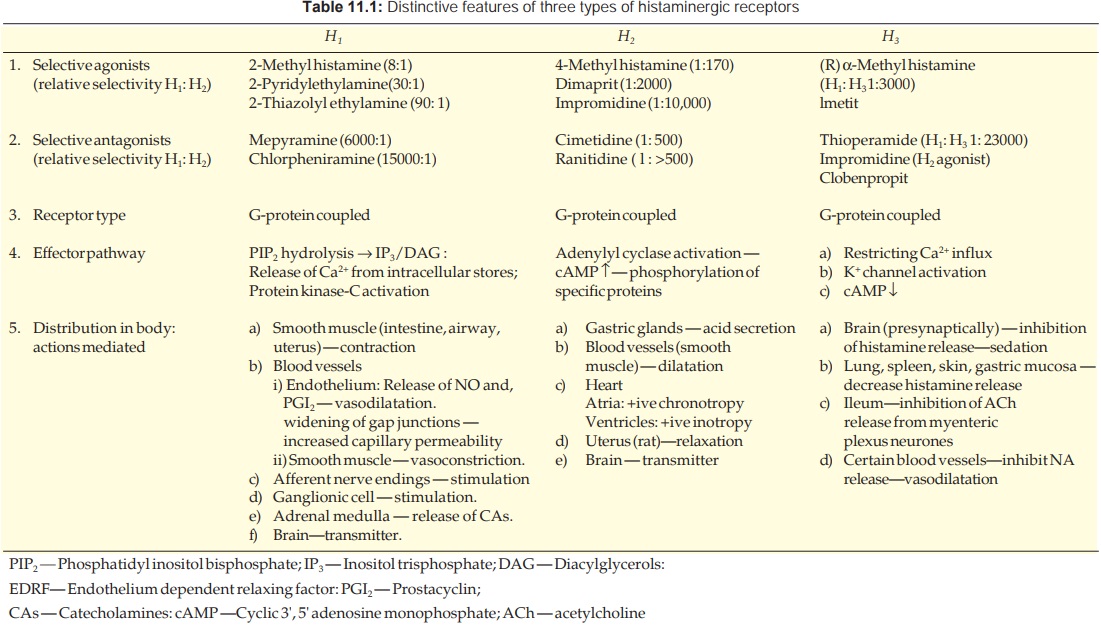Histamine Receptors
| Home | | Pharmacology |Chapter: Essential pharmacology : Histamine And Antihistaminics
Analogous to adrenergic αand β receptors, histaminergic receptors were classified by Asch and Schild (1966) into H1 and H2 : those blocked by then available antihistamines were labelled H1. Sir James Black (1972) developed the first H2 blocker burimamide and confirmed this classification.
HISTAMINE RECEPTORS
Analogous to
adrenergic αand β receptors, histaminergic receptors were classified by Asch and
Schild (1966) into H1 and H2 : those blocked by then
available antihistamines were labelled H1. Sir James Black (1972)
developed the first H2 blocker burimamide and confirmed this classification.
Both H1 and H2 receptors have now been cloned. A third H3
receptor, which serves primarily as an autoreceptor controlling histamine
release from neurones in brain was identified in 1983. Though some selective H3
agonists and antagonists have been produced, none has found any clinical
application. Features of these 3 type of histaminergic receptor are compared in
Table 11.1.

Molecular cloning has
revealed yet another (H4) receptor in 2001. It has considerable homology
with H3 and binds many H3 ligands. Eosinophils, mast
cells and basophils are the primary cells expressing H4 receptors;
activation enhances chemotaxis of these cells. The H4 receptor may
be playing a role in allergic inflammation: H4 antagonists are being
explored as potential drugs for allergic inflammatory conditions like rhinitis
and asthma. Intestines and brain are the other sites where H4
receptors have been located.
Related Topics
